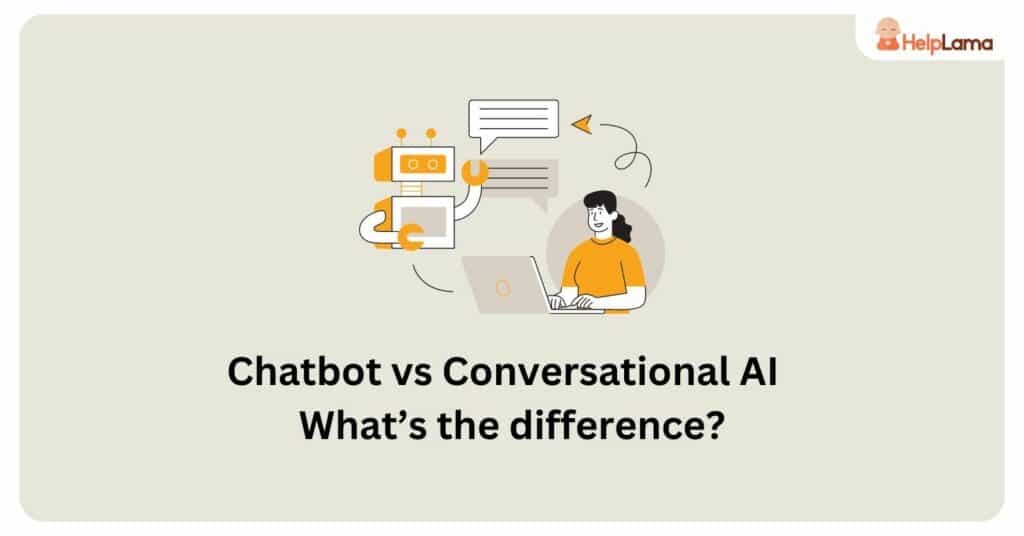Last Updated: December 2025
Chatbot vs conversational AI – Which option is more suitable for your business? While both “chatbot” and “conversational AI” are increasingly common terms, they hold different meanings.
Chatbots are typically rule-based systems designed to handle simple, scripted interactions, whereas conversational AI encompasses more sophisticated technologies that leverage natural language processing and machine learning to understand and respond to user inputs in a more dynamic and nuanced manner.
So, let’s explore the difference between chatbot and conversational ai to determine which option fits your business needs.
What is a chatbot?
There are two types of chatbots:
1) Rule-based chatbots
These are known as decision-tree, menu-based, script-based, button-based, or simple chatbots and are the most basic type of chatbots. By using predetermined rules, they answer common customer queries and offer choices to determine what answers they seek. Rule-based chatbots are good for answering FAQs and addressing basic customer inquiries.
2) Contextual Chatbots
Contextual chatbots leverage machine learning and natural language processing to grasp user meaning and provide tailored answers. Additionally, they can learn continuously from the interactions, allowing them to improvise their response over time.
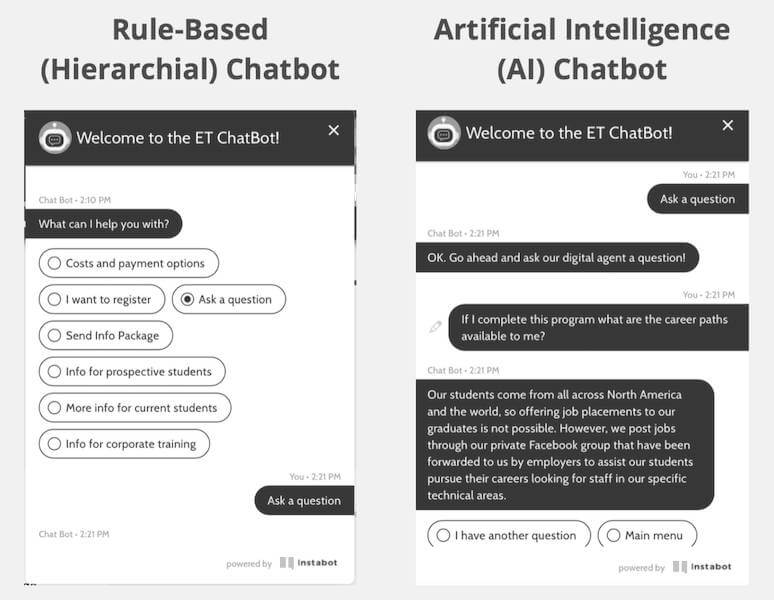
What is a conversational AI bot?
In conversational AI, the chatbots are enhanced due to the combined technology of Natural Language Processing and Machine Learning. This allows them to make intelligent conversations and engage in a human-like manner.
Furthermore, they can detect patterns, give recommendations, and initiate discussions as they accumulate a larger corpus of user inputs. According to an MIT Technology Review survey, 90% of organizations have experienced improved customer and employee satisfaction as conversational AI chatbots helped them improve complaint resolution and call processing.
With conversational AI, organizations can provide more personalized experiences by facilitating intelligent conversations.
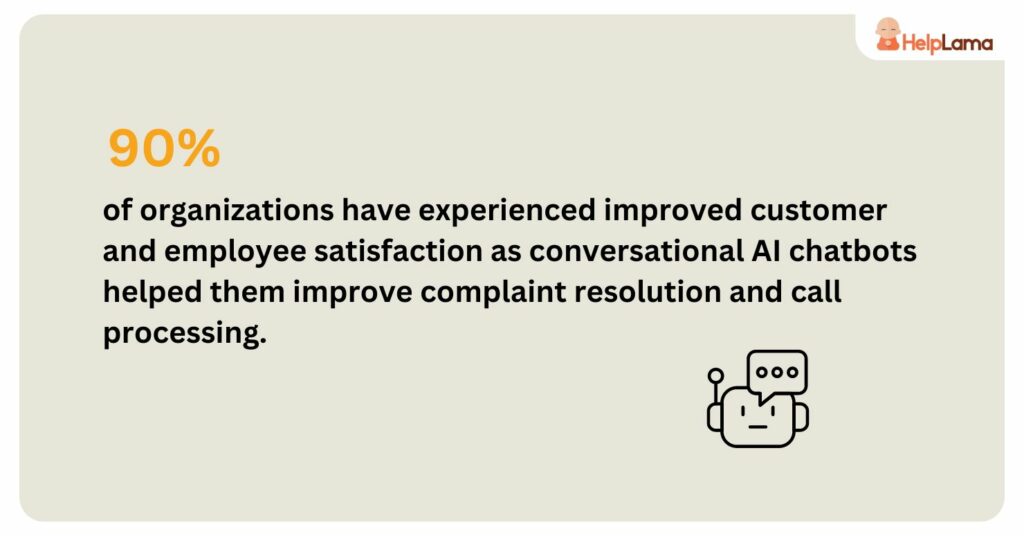
Difference between Chatbot and Conversational AI
Aspect | Traditional Chatbot | Conversational AI Chatbot |
Capabilities | Capable of text-only commands, inputs, and outputs. | Capable of both voice and text commands, inputs, and outputs. |
Channel Support | It can be used as a chat interface only. | It can be deployed on websites, voice assistants, smart speakers, and call centers. |
Conversational Flow | Pre-determined scripted conversational flow. | Utilizes natural language processing, understanding, and contextualization. |
Interaction Style | Simple scripted responses limit their ability to tackle unexpected questions. | Wide-scope, non-linear, dynamic interactions. |
Focus | Navigational focused | Dialogue focused |
Updates and Maintenance | Changing the pre-programmed rules or conversation flow requires a complete overhaul. | Capable of continual learning and fast iteration cycles. |
Scalability | Manual maintenance, updates, and revisions are difficult and time-consuming to scale. | Highly scalable; updates automatically as the company’s database and pages are updated. |
Building Process | Time-consuming and complicated building process. | Easy deployment and integration with existing databases and text corpora. |
Response Nature | Parrots back predetermined responses. | Understands the context of conversations and responds in a more natural way using NLP functionalities. |
Emotion and Intent Understanding | Limited to predefined responses, lacking emotion and intent recognition. | Understands human emotions and intents better, able to hold more complex conversations. |
Recommended: How to use chatbots for business: Only Guide
Chatbots vs Conversational AI: Use Cases
A) Chatbot Use Cases
1) Basic FAQs
For instance, when a customer has added an item to the cart and has a question regarding the return policy, rather than searching the website, a chatbot can help them instantly. Chabots are trained to answer common queries and provide necessary information for a hassle-free buying experience.
2) Appointment scheduling
Rather than having customers navigate complex phone menus or keeping them on hold, businesses can deploy a chatbot to book appointments. They can collect customer data, showcase various services, and available slots, and confirm the appointments.
3) Order Status Updates
A chatbot can monitor orders to provide constant updates to customers regarding their orders. It can give real-time updates on tracking information, provide expected delivery dates, and manage modifications to ensure a smooth experience.
4) Automated Support
Chatbots can assist customers with password resets, checking account balances, and updating personal information directly through the chat window. Additionally, it can automate monotonous processes like filling out forms to save customers time and frustration.
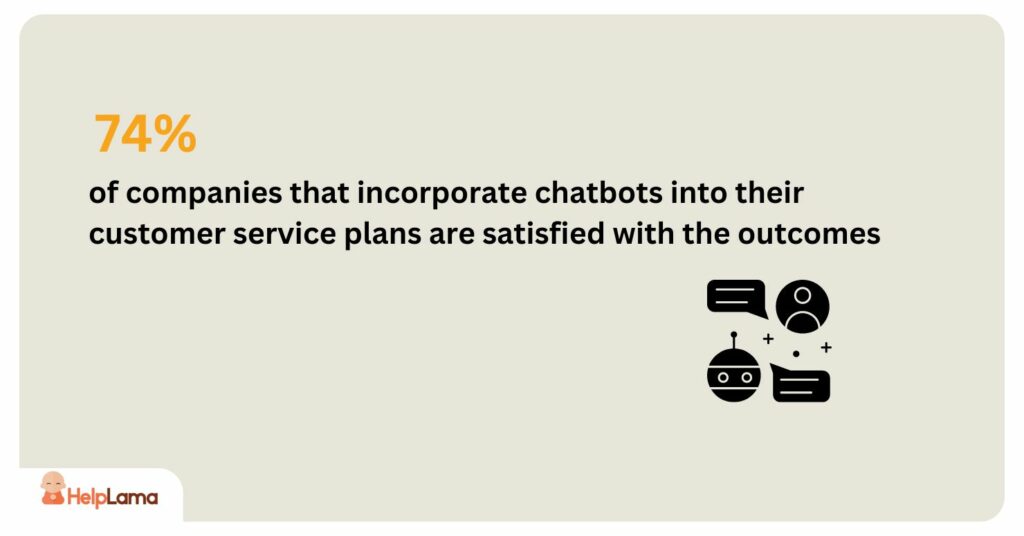
B) Conversational AI Use Cases
1) Personalized Product Recommendations
Conversational AI transforms shopping into a personalized experience. By learning your preferences and past purchases, it recommends products you’ll love and helps you discover hidden gems, all while boosting customer satisfaction and sales.
This not only enhances the shopping experience by making it more engaging and relevant but also increases the likelihood of upselling and cross-selling, ultimately driving higher revenue and customer satisfaction.
2) Complex Issue Resolution
If a customer encounters a malfunction with a newly purchased device, the built-in support system can assist. This system can answer their questions and provide step-by-step troubleshooting instructions.
By understanding the intricacies of the issue, these AI systems can offer precise and timely solutions, reducing downtime and improving the overall customer support experience.
3) Natural Language Understanding
Customers often reach out to different support channels with specific inquiries, but they express these queries using varied words or phrases. These AI helpers can understand your questions, even if you don’t ask them perfectly.
This ability ensures accurate responses, making the interaction feel more human-like and effective. By truly understanding the meaning behind the customers’ words, these systems can provide relevant and accurate information, enhancing the overall customer experience.
4) Emotional Support and Empathy
Sometimes, customers may seek more than just information or solutions, especially during difficult situations like dealing with a canceled flight or a delayed delivery. Conversational AI can offer emotional support while also providing the best possible resolutions.
It can be designed to exhibit empathy, understand customers’ concerns, and provide appropriate reassurance or guidance. This empathetic approach helps in building trust and loyalty, as customers feel understood and valued during stressful times.
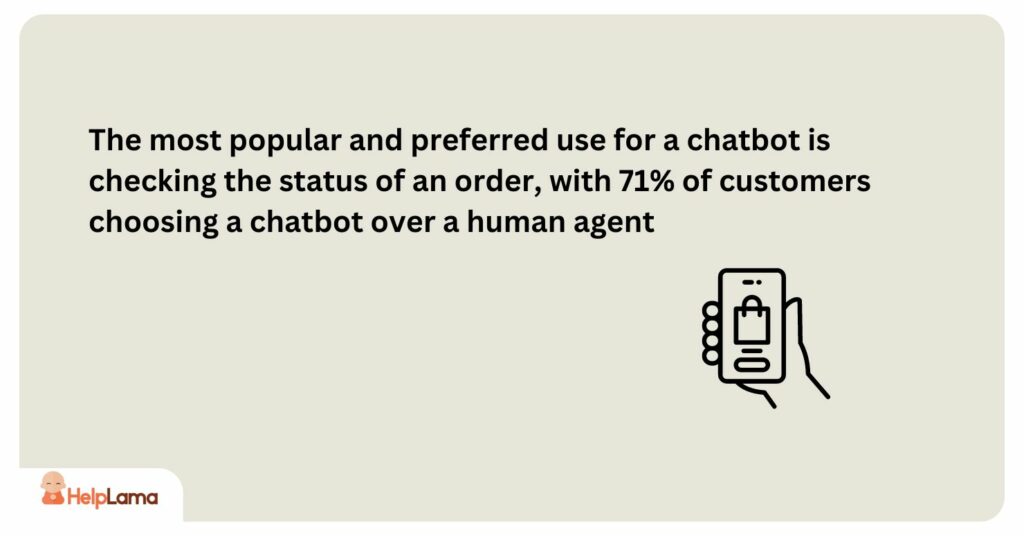
Conversational AI Bot Benefits
Using AI for conversations benefits businesses by making customers happy, saving time and money, and increasing sales.
1) Advanced Natural Language Understanding
Traditional chatbots operate within set parameters and respond based on predefined keywords, limiting their capabilities. Conversational AI, however, utilizes natural language processing, machine learning, and predictive analytics to learn from past interactions and provide intelligent, contextually relevant responses.
2) Contextual Maturity
Rule-based bots struggle with queries outside their programmed responses, leading to customer dissatisfaction. Conversely, conversational AI leverages previous interactions, transactions, and customer history to offer tailored suggestions, enhancing customer satisfaction and loyalty.
Research indicates that 56% of customers remain loyal to brands that understand their needs.
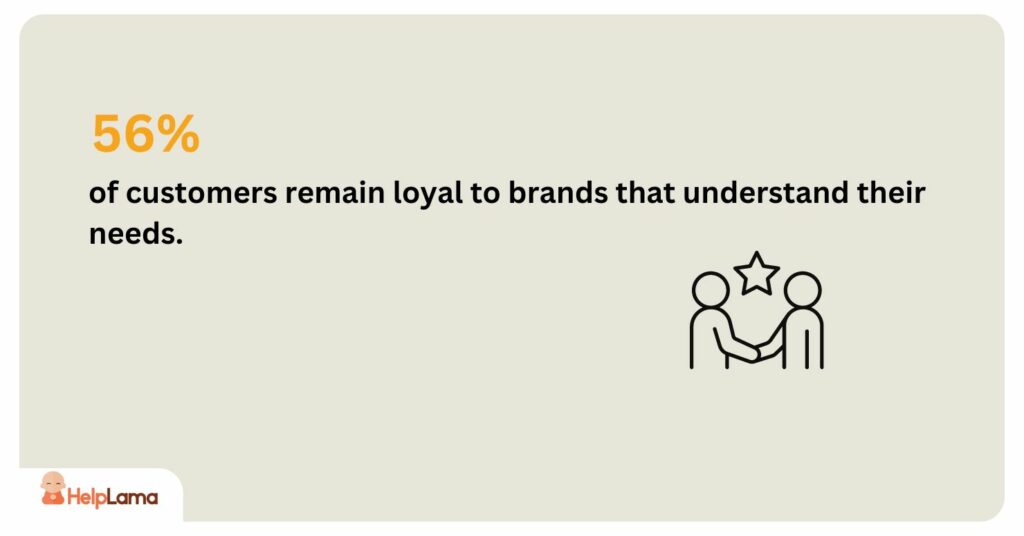
3) Multi-Intent Cognition
Traditional chatbots often handle only one question at a time, requiring customers to repeat queries, which can be frustrating. Conversational AI can process multiple questions in a single request, switching topics seamlessly within a dialogue.
4) Integration, Scalability, Accuracy, and Consistency
Chatbots often provide disconnected experiences, lacking scalability and integration across platforms. Conversational AI ensures a consistent and unified customer experience by integrating seamlessly across various channels, from social media to customer service interfaces.
5) Multilingual Capabilities and Voice Assistance
Traditional chatbots typically lack multilingual and voice command features. In contrast, conversational AI technologies like Siri, Google Assistant, and Alexa understand and respond to commands in multiple languages and through voice input.

Chatbot vs Conversational AI: Examples
Chatbot Examples
1) SendinBlue
SendinBlue Conversations offers a flow-based bot that engages the end user using if/then logic. Businesses can configure it to answer certain logical questions based on the user’s input. However, even if it is simple to set up, it cannot understand genuine user intent and may fail in more sophisticated situations.
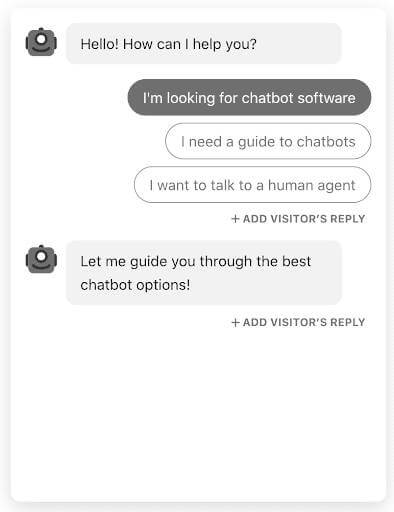
2) Sprinklr
Sprinklr too has the exact conversational flow of a rule-based chatbot. With every single response, it offers numerous possibilities (good and negative) When customers select any of them, it generates an automatic response. This is more intuitive because it can detect serial numbers recorded in their system, which requires it to be linked to their internal inventory system.
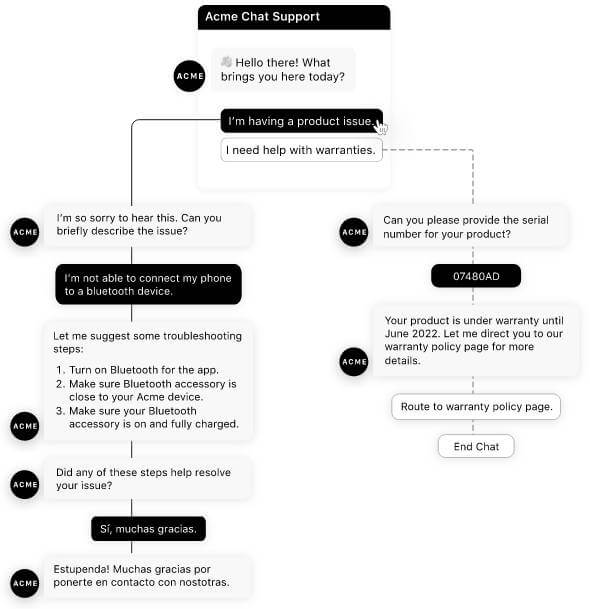
Conversational AI Examples
1) IBM’s Watson
IBM’s AI Chatbot Watson acts like a virtual agent that assists customers by resolving issues swiftly. With the help of AI, it regularly learns from the interactions to provide accurate responses over time. Additionally, it provides greater scalability and flexibility for different types of niches.
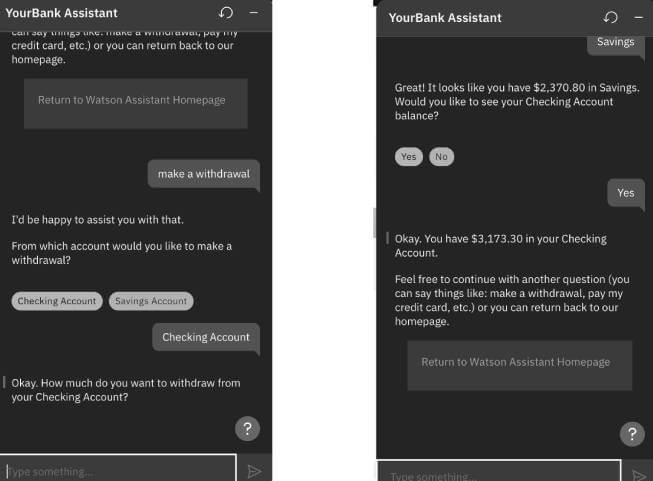
2) Babylon Health
Babylon employs a conversational AI bot to identify the user’s symptoms and recommend appropriate treatments. Furthermore, it can also identify the potential risks and help patients with medical disorders, offering more assistance if necessary.
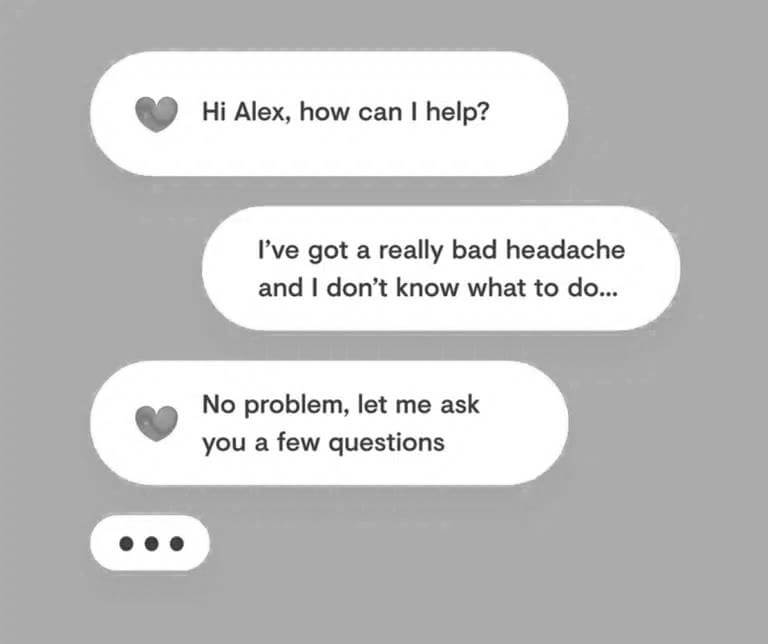
So that was our detailed guide on chatbot vs conversational AI. Now, before you leave, what if we introduced you to an AI-powered chatbot with custom automation and omnichannel support?
Meet Saufter – The Best Chatbot for Proactive Support!
Introducing Saufter – an AI-powered chatbot tailored for the manufacturing sector, offering proactive customer service. Saufter autonomously learns and responds, generating invaluable data insights.

Key Features
- Knowledge Base: Set up training in just 2 minutes! Connect your knowledge base, and the chatbot will automatically learn from it.
- Omni-Channel Delivery: Seamlessly deliver responses across web portals, emails, live chats, and social media platforms.
- Usage Insights: Gain access to crucial statistics, including the most helpful, liked, and clicked content, to optimize your support resources.
- E-commerce Expertise: Monitor orders 24/7, manage returns, modifications, and delivery issues, and handle changes effortlessly.
- Integrated Channels: Enjoy the convenience of Saufter across multiple channels, including email, live chat, phone calls, social media, WhatsApp, and SMS.
Conclusion
In summary, the distinction between chatbot vs conversational AI is significant and impactful for businesses. While traditional chatbots offer basic, rule-based interactions, conversational AI provides advanced, dynamic, and context-aware communication.
Understanding these differences is crucial for selecting the right technology to meet your business needs and deliver exceptional customer experiences. Additionally, we recommend using Saufter for seamless AI-powered customer support. Built specifically for E-commerce and SaaS businesses, it offers numerous features to help you automate repetitive tasks and streamline your customer support operations.
So what are you waiting for? Sign up now for a 15-day free trial and explore the platform to see if it fits your business needs!
